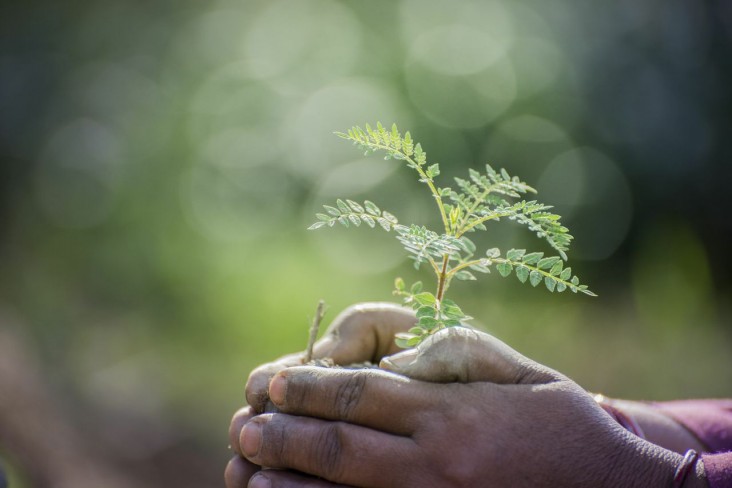
Overview
One in four people in India depend directly on forests for sustenance. However, more than 40 percent of India’s total forest cover is at various stages of degradation resulting in carbon emissions. USAID in partnership with India’s Ministry of Environment, Forest and Climate Change and civil society organizations is improving the management of India’s forests to cost-effectively address climate change and strengthen forest-dependent communities.
USAID/India Programs:
Forest-PLUS (Partnership for Land Use Science): USAID in partnership with India’s Ministry of Environment, Forest and Climate Change (MOEF&CC) and state forest departments is piloting technologies, tools and methods of forest management in the four states of Karnataka, Madhya Pradesh, Himachal Pradesh, and Sikkim to improve forests ecosystem, carbon stocks, biodiversity and livelihoods. Forest-Plus, initiated under the U.S.-India bilateral agreement for Sustainable Forests and Climate Adaptation Program, is also supporting activities to strengthen the capacity for REDD+ (Reducing Emissions from Deforestation and forest Degradation) implementation in India. Some of the notable activities under the project include:
- Forest Carbon: The program in collaboration with the Forest Survey of India and the four state forest departments has developed a nationally integrated Forest Data Management System (FDMS) to collect, store and analyze forest carbon using field data and remote-sensing technologies. The remote-sensed data models measure forest carbon and forest condition from pixel to Tier 3 carbon mapping level and allow detection of deforestation and degradation. A mobile application, mForest, has also been developed that allows communities and forest department staff to collect data from their local forests and upload it into the FDMS system. The data system has been successfully tested in Karnataka.
- Ecosystem Health: Forest-PLUS is demonstrating simple and improved non-timber harvesting, grazing management and silage-based feeding techniques in the four project states to help the forest-dependent communities draw produce from the forests without damaging the ecosystem’s natural health. For example in Himachal Pradesh, the program has devised low-cost Oak regeneration techniques to improve forest conditions.
- Corporate Forest Responsibility (CFR): The Forest-PLUS program has conceptualized CFR to engage India’s corporate sector to join the movement to restore India’s forest landscapes. To date, six of India’s leading corporates have committed to join the effort. For example, Mahindra Sanyo, one of the largest steel products manufacturers in India, has sponsored a nursery to raise seedlings for forest restoration in central India.
Innovations for Forest Resources Management (InFoRM): Under this program, USAID is addressing forest degradation by increasing the income of forest-dependent communities through organized production and collection, value addition and marketing of non-timber forest products, agriculture and horticulture products. Under InForm, USAID is partnering to implement the following four projects:
- Strengthening Forest and Forest-Based Livelihoods in Odisha: In partnership with the Centre for Youth & Social Development, USAID is supporting more than 4,000 tribal, forest-dependent households in Koraput, Odisha, to increase their incomes by training them to market and process their non-timber forest produce (NTFP). USAID is also helping producer collectives develop capabilities for the management of NTFP enterprises.
- Forests for Biodiversity and Well-Being: USAID and Ashoka Trust for Research in Ecology and the Environment (ATREE) are focusing on strengthening the biodiversity hotspots in the states of Karnataka and West Bengal by adapting cutting-edge innovations and practices. The project aims to develop a model of managing forest ecosystems and societal interactions in the face of global environmental and economic change by integrating scientific knowledge, local community knowledge and perceptions, action-oriented research findings, and initiatives for co-management of natural resources.
- Innovations in Ecosystem Management and Conservation (IEMAC): USAID and IORA Ecological Solutions under the IEMaC project aim to substantially reduce pressure on India’s forests for fuel wood through NTFP-based alternative livelihood creation and alternate technology deployment. Divided into seven modules, the project involves 500 community members, 300 field level government officials and 10 grassroot NGOs to develop sustainable fuel wood harvest techniques, integrate women in NTFP management, and work with the community to create NTFP based enterprises.
- Strengthening Participatory Forest Management in India: USAID and Enviro Legal Defense Firm are together recommending policy measures to strengthen the participatory forest management and governance framework in India in a manner that keeps the community needs at the center stage while ensuring the sustainability of the resource itself.
- Tiger Matters: USAID and Wildlife Conservation Trust partner to strengthen the protection of tiger populations in Central India. The project focuses on three components – forest protection, the use of science to further understand the behavior of dispersing tigers and their corridor habitats, and to build capacity among frontline forest staff.








Comment
Make a general inquiry or suggest an improvement.